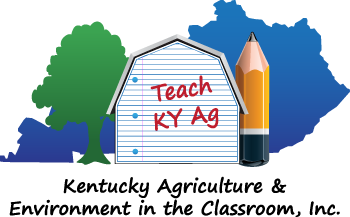Eighth Grade Science
8-PS3-1 Construct and interpret graphical displays of data to describe the relationships of kinetic energy to the mass of an object and to the speed of an object.
8-LS1-8 Gather and synthesize information that sensory receptors respond to stimuli by sending messages to the brain for immediate behavior or storage as memories.
8-LS2-4 Construct an argument supported by empirical evidence that changes to physical or biological components of an ecosystem affect populations.
Purple Plow Spring 2025 Challenge - Cross-curricular connections to mathematics and economics.
8-LS2-5 Evaluate competing design solutions for maintaining biodiversity and ecosystem services.
Purple Plow Spring 2025 Challenge - Cross-curricular connections to mathematics and economics.
8-LS3-1 Develop and use a model to describe why structural changes to genes (mutations) located on chromosomes may affect proteins and may result in harmful, beneficial, or neutral effects to the structure and function of the organism.
8-LS3-2 Develop and use a model to describe why asexual reproduction results in offspring with identical genetic information and sexual reproduction results in offspring with genetic variation.
8-LS4-5 Gather and synthesize information about the technologies that have changed the way humans influence the inheritance of desired traits in organisms.
8-LS4-1 Analyze and interpret data for patterns in the fossil record that document the existence, diversity, extinction, and change of life forms throughout the history of life on Earth under the assumption that natural laws operate today as in the past.
8-LS4-2 Apply scientific ideas to construct an explanation for the anatomical similarities and differences among modern organisms and between modern and fossil organisms to infer evolutionary relationships.
8-LS4-3 Analyze displays of pictorial data to compare patterns of similarities in the embryological development across multiple species to identify relationships not evident in the fully formed anatomy.
8-LS4-4 Construct an explanation based on evidence that describes how genetic variations of traits in a population increase some individuals' probability of surviving and reproducing in a specific environment.
8-LS4-6 Use mathematical representations to support explanations of how natural selection may lead to increases and decreases of specific traits in populations over time.
8-ESS1-4 Construct a scientific explanation based on evidence from rock strata for how the geologic time scale is used to organize Earth's 4.6 billion-year-old history.
8-ESS3-1 Construct a scientific explanation based on evidence for how the uneven distributions of Earth's mineral, energy, and groundwater resources are the result of past and current geoscience processes.
8-ESS3-5 Ask questions to clarify evidence of the factors that have caused the rise in global temperatures over the past century.
8-ESS3-2 Analyze and interpret data on natural hazards to forecast future catastrophic events and inform the development of technologies to mitigate their effects.
8-ESS3-3 Apply scientific principles to design a method for monitoring and minimizing a human impact on the environment.
8-ESS3-4 Construct an argument supported by evidence for how increases in human population and per-capita consumption of natural resources impact Earth's systems.
Purple Plow Spring 2025 Challenge - Cross-curricular connections to mathematics and economics.
MS-ETS1-1 Define the criteria and constraints of a design problem with sufficient precision to ensure a successful solution, taking into account relevant scientific principles and potential impacts on people and the natural environment that may limit possible solutions.
Purple Plow Spring 2025 Challenge - Cross-curricular connections to mathematics and economics.
MS-ETS1-2 Evaluate competing design solutions using a systematic process to determine how well they meet the criteria and constraints of the problem.
Purple Plow Spring 2025 Challenge - Cross-curricular connections to mathematics and economics.
MS-ETS1-3 Analyze data from tests to determine similarities and differences among several design solutions to identify the best characteristics of each that can be combined into a new solution to better meet the criteria for success.
MS-ETS1-4 Develop a model to generate data for iterative testing and modification of a proposed object, tool, or process such that an optimal design can be achieved.
